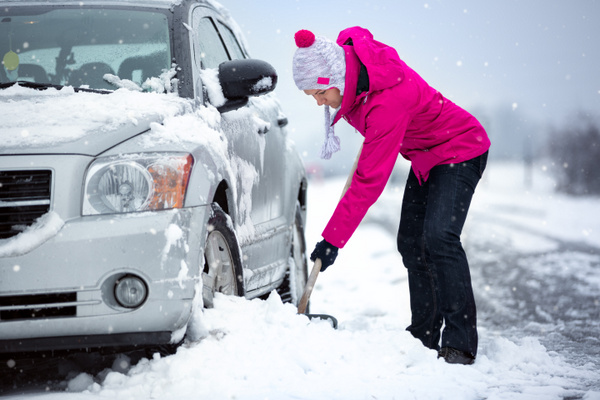
Keeping Roads Safe with Salt or Sand this Winter Season
As the snowy season quickly approaches, it is yet time again for the big debate: Which to use this year to combat snow and ice on our roadways, salt or sand? Although parts of the tri-state area experienced a warm start to the fall season, winter has come upon us pretty quickly. With temperatures already hitting below the freezing mark and snow flurries falling as early as Thanksgiving Day, it is hard to ignore the indication that this year will be a good reflection of last. New Jersey saw over 54” of the fluffy white stuff last year, ranking it the 7th snowiest winter in the past 120 years…and once again, forecasters are undoubtedly predicting a very snowy winter for the northeast.
As towns, cities and counties prepare for the winter ahead, many public officials and engineers are wrestling with what seems to be an age old question: Which is better for removing the icy mess, salting or sanding? There are advantages and disadvantages to both, which is why the debate has not yet been settled. In many cases, the decision to use one or the other is made on a case-by-case basis. Some storms are snowier while others create an icier affect. While neither is particularly fun to drive in, they both pose different conundrums while the roads wait to be made safe for transport. Salt is mainly used to melt the build-up while sand is mainly used to create traction. Of course, heated roadways sound great about now, but they are still many years away.
Pro-Salt:
De-icing chemicals accomplish the task at hand by lowering the freezing point of water. Low freezing points are what allow sodium and calcium chloride to be effective for winter road maintenance. Although salt generally costs twice as much as its adversary, it is also thought to be twice as effective. For specific storm forecasts, many DOT’s choose to treat the roadways with de-icing methods before the snow falls, preventing the snow from bonding with the pavement from the start. This practice is used in hopes of eliminating the need for sanding and therefore eliminating the need for the clean-up that ensues. Unfortunately, a major concern is the impact that the sodium chloride has on our environment. Research suggests that soil, vegetation, water, roadways and vehicles are all impacted. Although new construction methods are reducing the impact, chemicals can accelerate deterioration in concrete and steel structures such as bridges. And as many of us have experienced over the years, the acceleration of personal and commercial vehicle corrosion is also a major concern.
Pro-Sand:
Sanding provides traction on roadways, allowing vehicles to get a better “grip” on the road – this is something that sodium chemicals just can’t do. Although the material is in essence cheaper than sodium chloride products, a much higher quantity of matter needs to be used to be effective. A truck loaded with ice-melt can cover about seven times the amount of roadway as can a sand truck of the same capacity. Also, during storms with high wind, it can easily blow off the roadways before accomplishing its task. A study found that at highway speeds, the particles are swept off the road after just eight to twelve cars drive over it. Since many of the roads aren’t able to be plowed before the snow gets packed down into an icy sheet, sand is the best way to establish safer roads and create added traction for those who lucky enough to stay at home.
Since the facts are clear that sanding requires repeated application and extensive cleanup, and salting can hurt the environment, the debate will surely continue about the best way to handle snow and ice for many years to come…
For more information about snow and ice removal, contact Millenium Stoneworks in NJ at 732-519-1112 or 347-723-6990.

